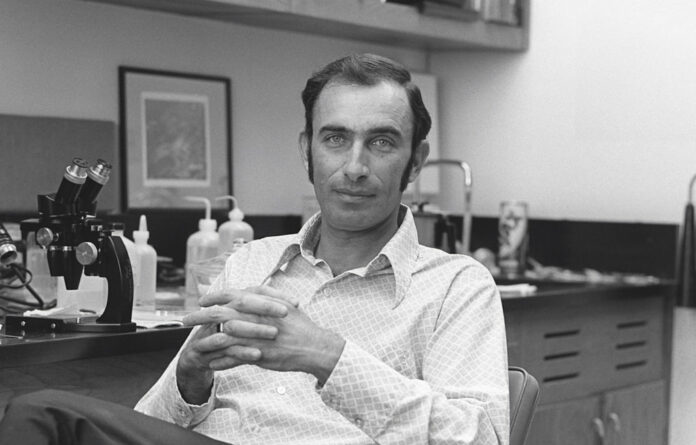The renowned mathematician/physicist Lord Kelvin stated in 1895 that “heavier-than-air flying machines are impossible.”
And Albert Einstein, in 1932, contended that “there is not the slightest indication” that nuclear energy “will ever be obtainable.”
If we had a dollar for every predictive pronouncement that turned out to be a dud, we could buy a boatload of gold-plated crystal balls.
Here’s another dollar’s worth:
“In ten years, all important animal life in the sea will be extinct. Large areas of coastline will have to be evacuated because of the stench of dead fish.”
Scary (not to mention smelly), no?
The prediction, though, was made in 1970.
By none other than Paul Ehrlich, Bing Professor Emeritus of Population Studies of the Department of Biology of Stanford University.
The biologist became a phenom back in 1968, when a book he published, “The Population Bomb,” became a bestseller. It predicted that “in the 1970s, the world will undergo famines—hundreds of millions of people are going to starve to death in spite of any crash programs embarked upon now. At this late date, nothing can prevent a substantial increase in the world death rate.”
Professor Ehrlich compared the “population explosion” to the uncontrolled growth of cancer cells and proposed the levying of hefty taxes on children’s products like cribs and diapers, even adding sterilizing chemicals to water supplies.
If you are old enough to have lived through the ’70s, you may not remember the end of the world, because, well, it didn’t happen. In fact, the global death rate per 1,000 people has greatly fallen since. In 1968, it was 12.5; in 2019, it was 7. It ticked up to 8 in 2020, but only because of the COVID-19 pandemic.
In 1968, when the Stanford professor wrote his book, in which he cited the planet’s growing population and dwindling resources as society’s engine of self-destruction, the number of people on earth was an estimated 3.5 billion. Today it’s eight billion.
And while, tragically, people starve in places like parts of Africa and Afghanistan, that is due not to any lack of global food supply but rather to the corruption of their leaders and other criminals. The rest of the world eats to satiety (and, unfortunately for our health, in the case of us Americans, well beyond it).
Professor Ehrlich’s doomsday predictions were embraced at the time by legions of other scientists. In 1970, Harvard biologist George Wald went even further, predicting that, without immediate action to reverse trends, “civilization will end within 15 or 30 years.” Whew! We dodged that bullet, too.
One might imagine that such Chicken Littles would be safely slunk out of sight. But the panicked poultry persist.
In fact, Professor Ehrlich, now 91, recently appeared on CBS’s “60 Minutes” news program to make newly revamped dire predictions. Doomsday 2.0! (No surprise that he recycles.) He maintains that “humanity is very busily sitting on a limb that we’re sawing off.”
“Humanity,” he informs us, “is not sustainable. To maintain our lifestyle… for the entire planet, you’d need five more earths. Not clear where they’re gonna come from.”
Why the earth we currently have will, I boldly predict (!), suffice humanity’s needs is because of what prevented Professor Ehrlich’s 1968 predictions from coming to fruition: human ingenuity. The Creator of the earth (and the heavens) created human beings in His image, with the capacity for creativity and innovation.
That is why the great growth in the planet’s population since 1968 didn’t result in widespread starvation. The Third Agricultural Revolution, usually referred to as the Green Revolution, fueled by human determination and creativity, greatly increased crop yields and agricultural production.
In the late 1960s, farmers began incorporating new technologies, like high-yielding varieties of grains, the use of chemical fertilizers, pesticides, and controlled irrigation. Mechanization of planting and harvesting further added to productivity.
Genetic modification technologies (which some may fear but shouldn’t) promise even greater strides in food production and crops’ quality of nutrition.
So, while for some the sky is still falling, for others…with Hashem’s help, it’s the limit.
To read more, subscribe to Ami





















